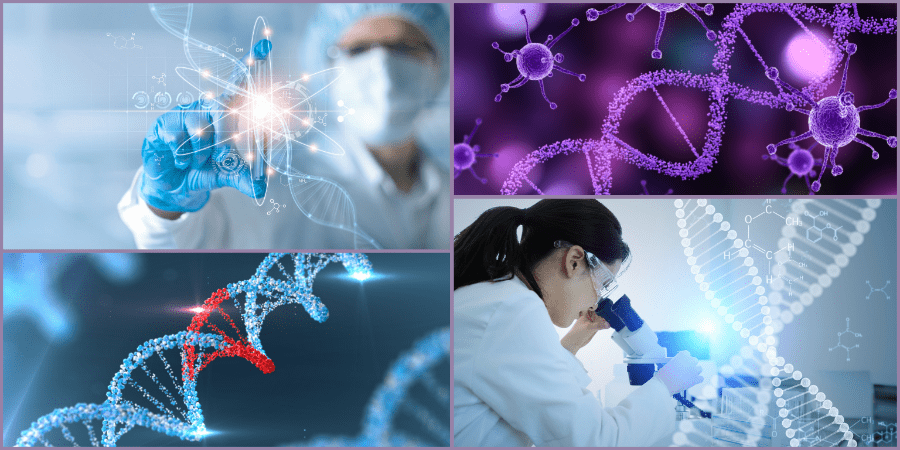Gene Therapy: What Is It And How Does It Work?
26 Apr, 20223:43Scientists, health professionals, and researchers have been working for decades on finding w...

Scientists, health professionals, and researchers have been working for decades on finding ways to modify the human genome to treat, cure or prevent a disease or medical condition.
The first person who attempted to change human DNA was Martin Cline, in 1980, whilst the first successful human nuclear gene transfer, approved by the US National Institutes of Health, occurred in May 1989.
In more recent years, Gene therapy has become gradually accepted by people and governments around the world and presents much potential as an alternative to existing treatments for various human conditions. As of 2019, 22 gene medicines have been approved by the drug regulatory bodies around the world.
So, what exactly is gene therapy? How does it work? And what is it currently being used for?
What is gene therapy?
Gene therapy refers to the medical field which focuses on modifying the genetic material within cells to prevent or treat a disease. It allows medical practitioners to treat a health disorder by changing the patient’s genetic makeup instead of using drugs or surgery.
There is much hope that gene therapy could eventually be used to cure a wide range of health issues such as cystic fibrosis, heart disease, diabetes, cancer, haemophilia, and AIDS.
How does it work?
Gene therapy is used to correct defective genes in a cell to help the body better fight a disease or cure it. This is done by either adding, deleting or correcting genetic material.
Changing the genetic material changes the way a protein, or group of proteins, is produced within a cell. Put simply, gene therapy aims to give the cell a new set of instructions to change the type or amount of protein it creates.
There is a range of mechanisms that can be used to change the genetic material within a cell, although these can be grouped into two types of gene therapy: gene addition and genome editing.
1. Gene addition or gene transfer
With gene addition, also referred to as gene transfer, new genetic material is introduced into cells. If a faulty gene is causing a necessary protein to be missing or defective, a functional copy (known as a transgene) of the gene can be introduced to recover the function of the protein.
Alternatively, a different gene can be introduced which will provide instructions for a protein to help the cell operate normally, despite the genetic fault.
With gene transfer, the mutated or unhealthy gene does not need to be removed or replaced, as the transgene will provide the instructions for the right protein to be produced.
Gene addition is primarily being explored for single-gene diseases when a mutation occurs in one or both sets of genes. Gene addition is done using a vector, which will deliver the healthy gene into a person’s cells, either ex vivo (outside the person’s body) or in vivo (inside the person’s body).
Often, a virus is used as the vector. This is because viruses have evolved to be very good at getting into cells. Scientists have managed to find ways to remove the viral genes whilst keeping the virus’s ability to introduce itself in a cell, thus getting the virus to insert the new therapeutic genes into a cell.
2. Genome editing or gene editing
Genome editing, also referred to as gene editing, is a more recent gene therapy technique where instead of introducing new genetic material into cells, molecular tools are introduced to edit the existing DNA in the cells at specific locations in the genome.
Gene editing can be used to:
Fix a genetic mutation that’s causing a disease so that the gene can function properly
Turn on a gene to help fight a condition
Turn off a gene that’s not working how it should
Remove a piece of DNA that’s preventing a cell from working properly or causing a disease
One of the most well-known methods of gene editing is CRISPR-Cas9 – short for clustered regularly interspaced short palindromic repeats and CRISPR-associated protein 9.
This system presents a lot of potential. It’s faster, cheaper, simpler, more accurate, more efficient, and has wider potential applications than other gene-editing methods.
The CRISPR-Cas9 system consists of two key molecules that introduce a change into the DNA. These two molecules are:
An enzyme called Cas9, which acts as a pair of molecular scissors that can cut the two strands of DNA at specific locations in the genome so that sections of DNA can then be removed or added
A piece of RNA referred to as guide RNA (gRNA) with a short sequence that binds to a specific target sequence in a cell's DNA. The guide RNA is also attached to Cas9, thus guiding it to where the incision needs to be made.
Once the DNA has been cut, researchers use the cell’s own DNA repair mechanisms to either delete or add pieces of genetic material, or they can introduce changes to the DNA by replacing existing segments with a tailored DNA sequence.
What are the current therapies on the market?
At present, most gene therapies are still at various stages of advancement in clinical trials. However, a small number of gene therapies have already been approved by the FDA and/or the EMA, including:
Abecma, for multiple myeloma (Bristol-Myers Squibb)
Breyanzi, for B-cell lymphoma (Bristol-Myers Squibb)
Luxturna, for Leber congenital amaurosis (Spark Therapeutics)
Zolgensma, for Spinal muscular atrophy Type I (Novartis Gene Therapies)
NES Fircroft and the Life Science industry
NES Fircroft has been supporting the Life Science market for over 20 years, sourcing personnel for engineering, scientific and commercial roles across the market. We recruit highly experienced professionals to the biotechnology, pharmaceutical, diagnostics, and medical devices industries.
We can provide both permanent and contract candidates to the Life Science industry across Quality, Clinical, Regulatory/Compliance, and Engineering disciplines.
If you’re looking for skilled personnel, get in touch with our dedicated Life Science Recruitment teams to find out how we can support you.
Are you looking for a new job? Browse our Life Science vacancies today.










